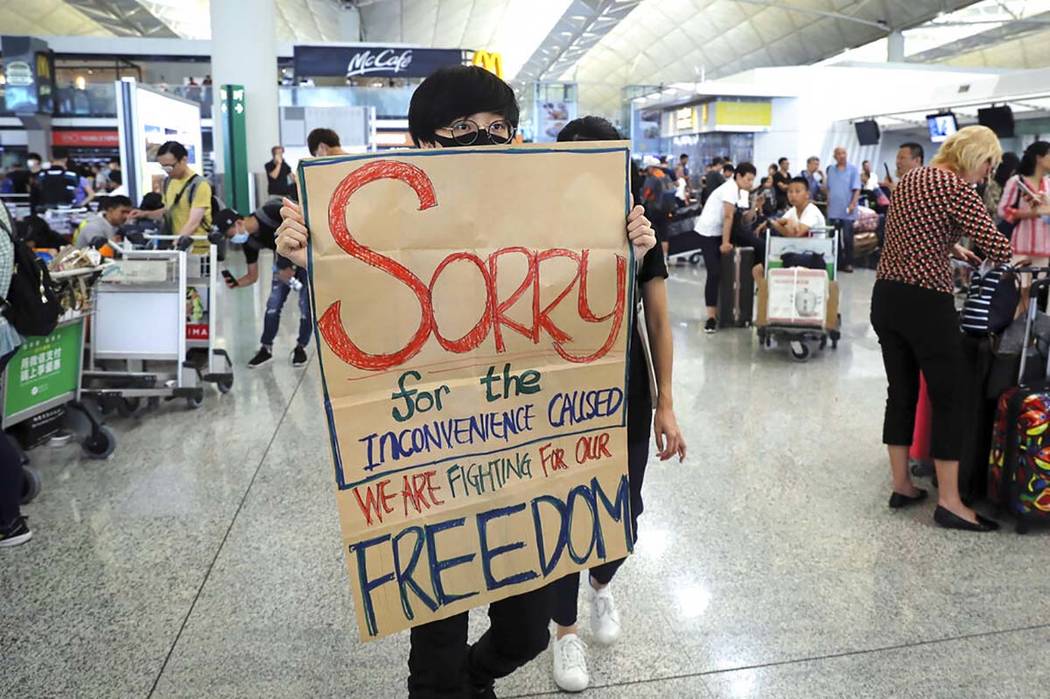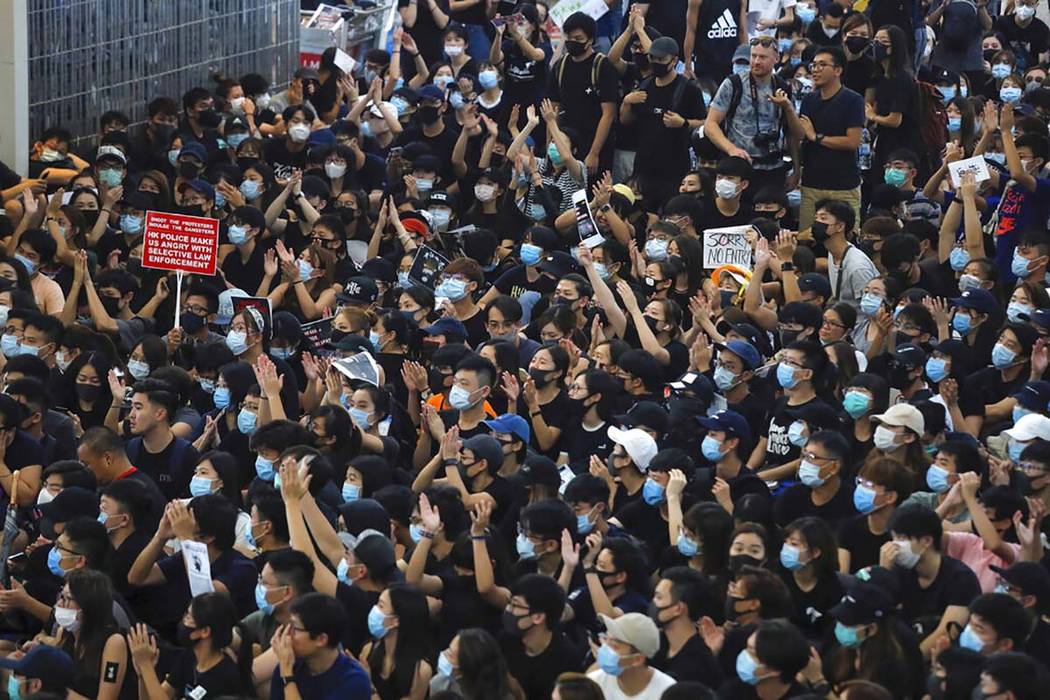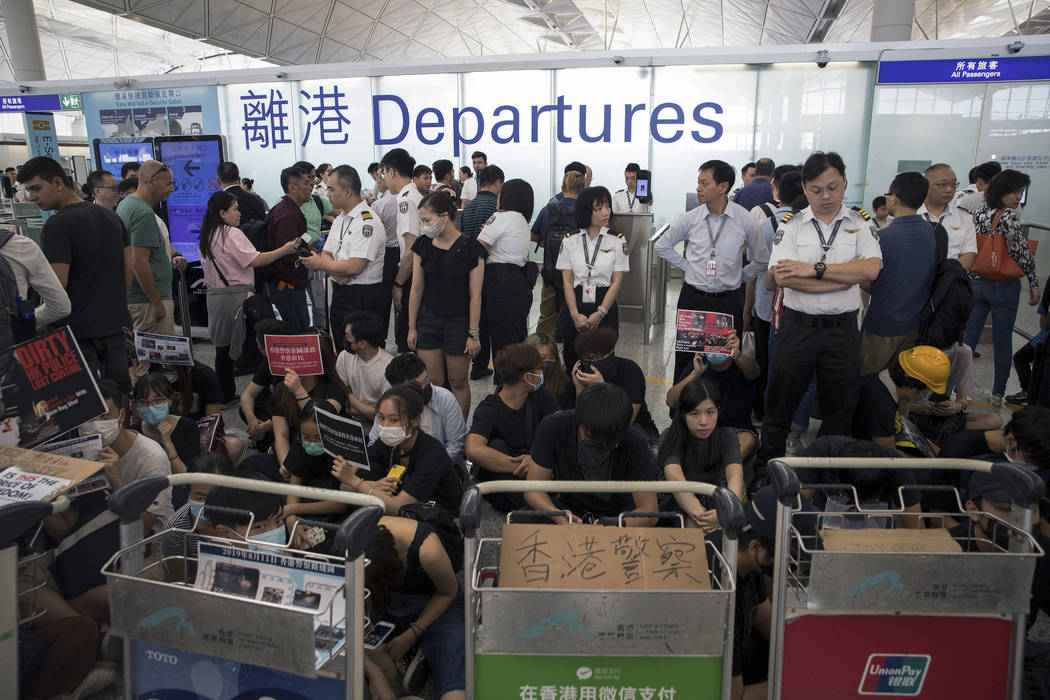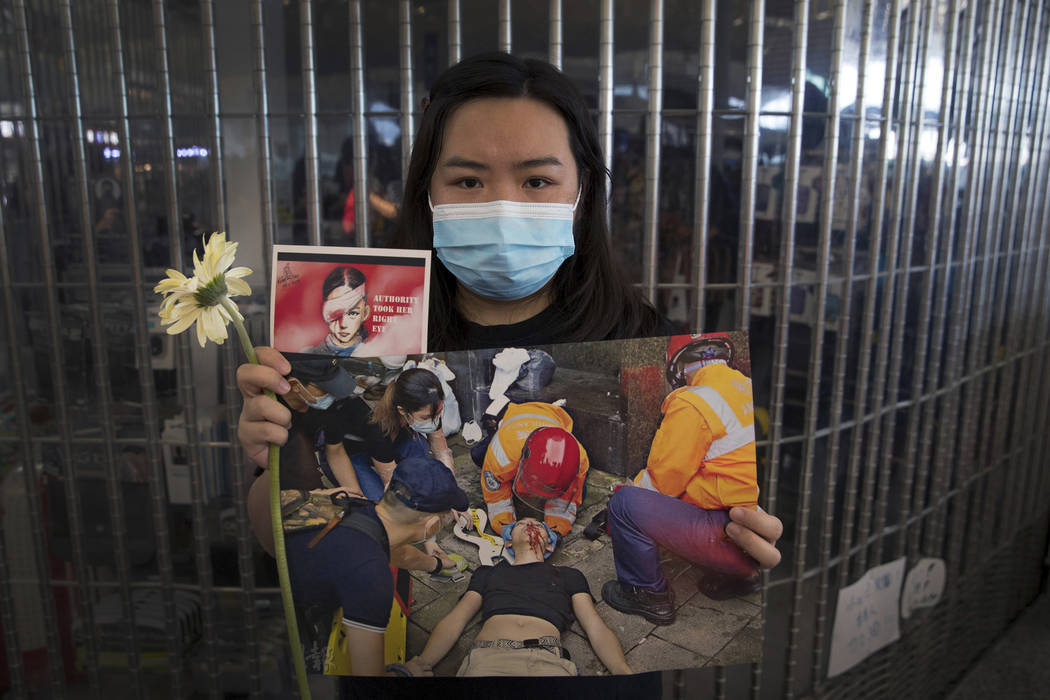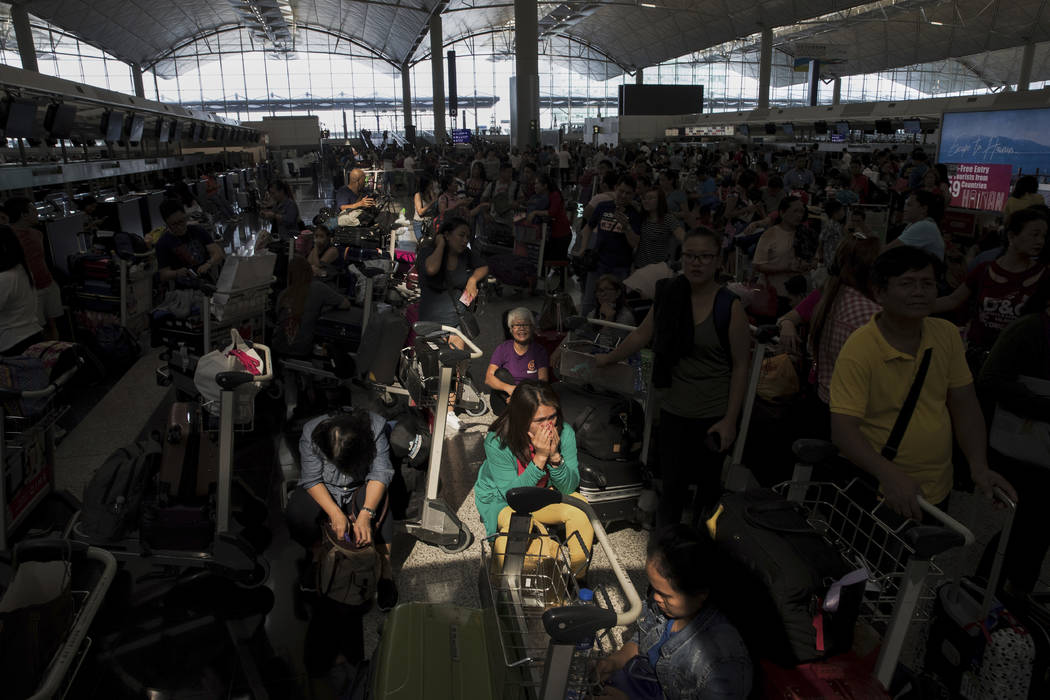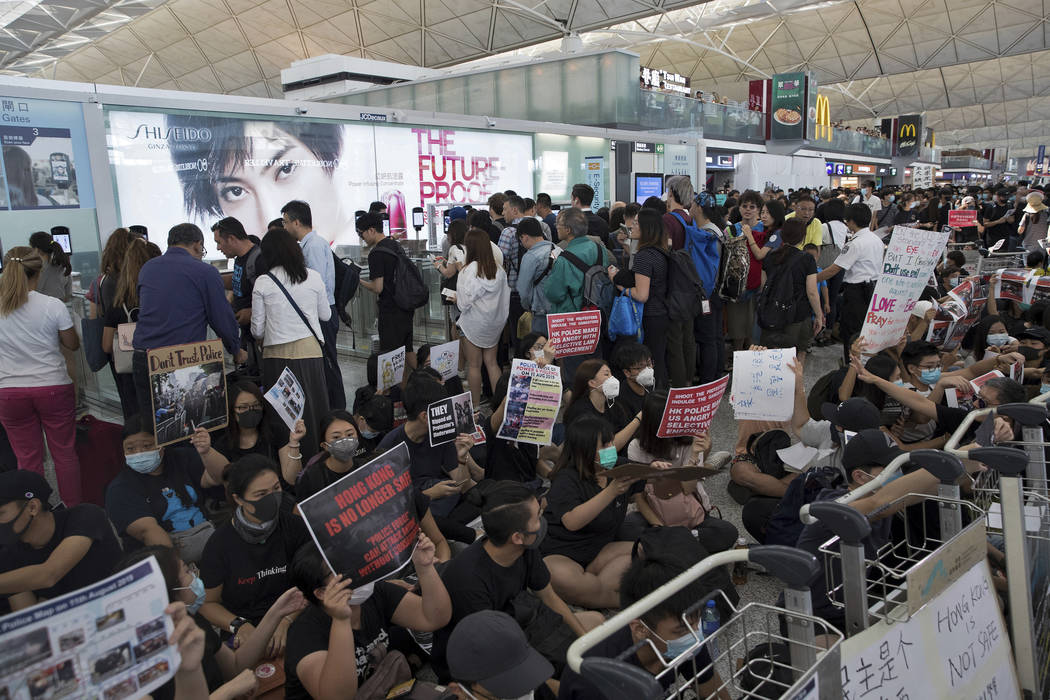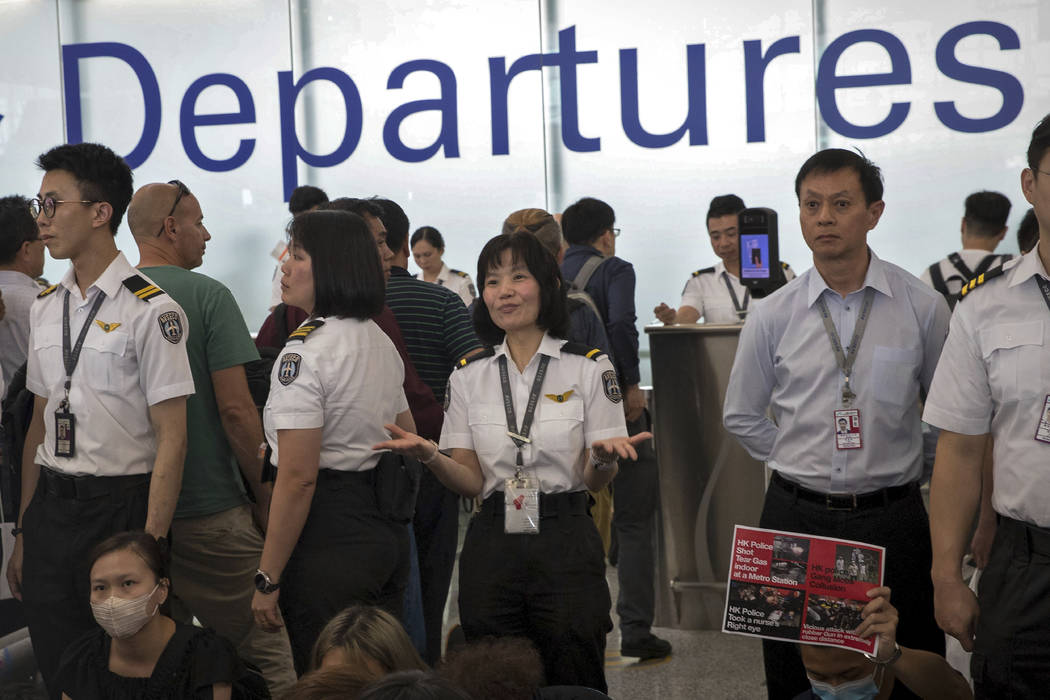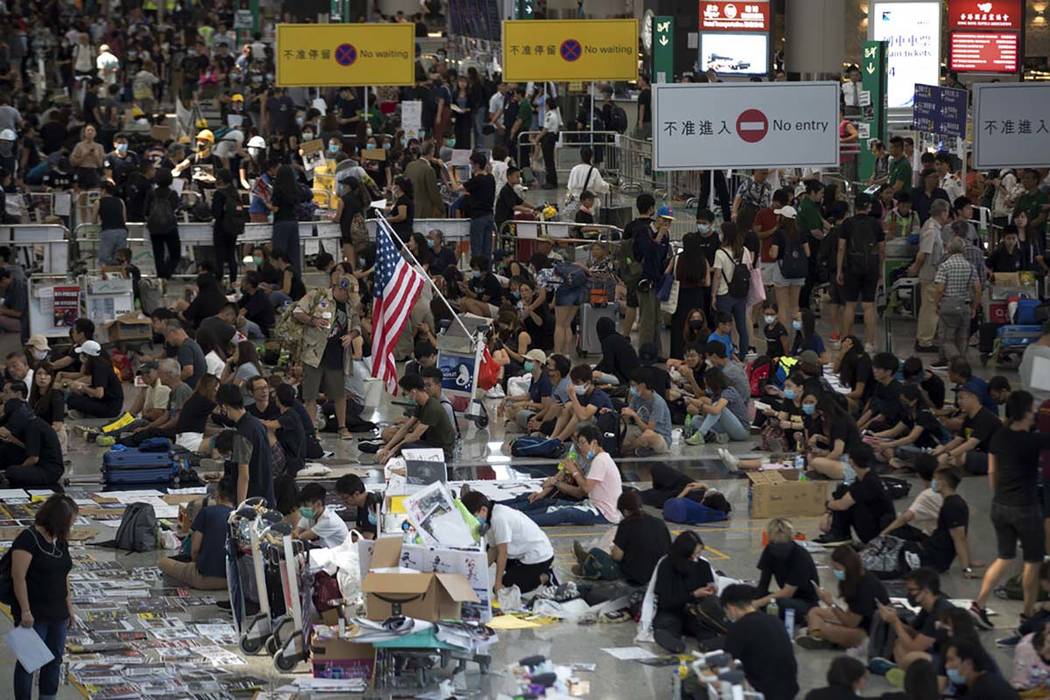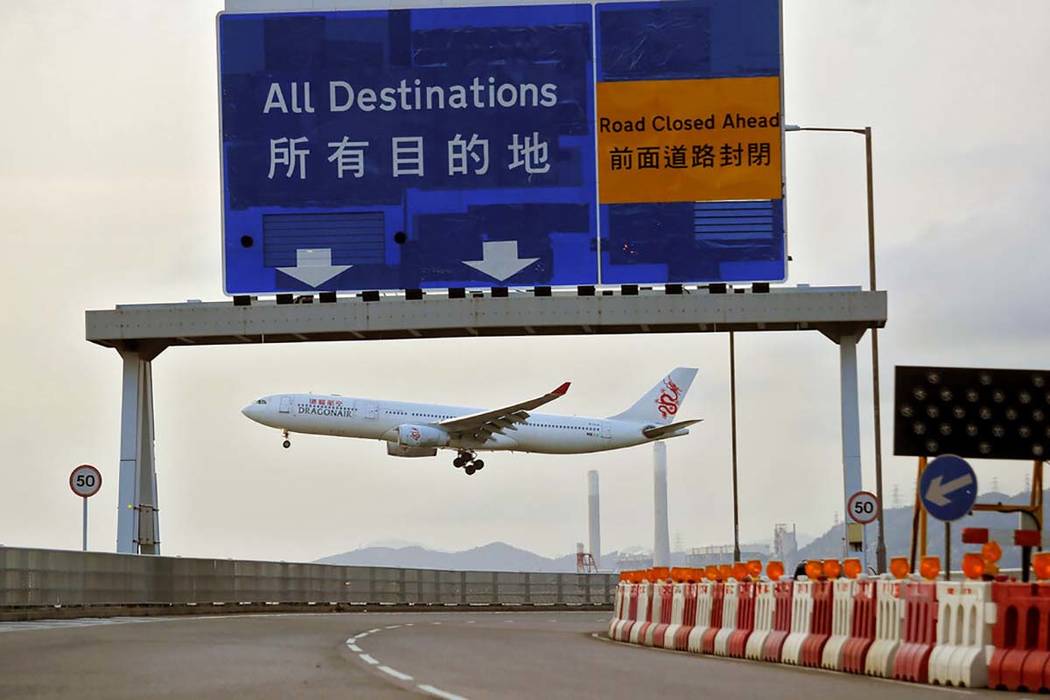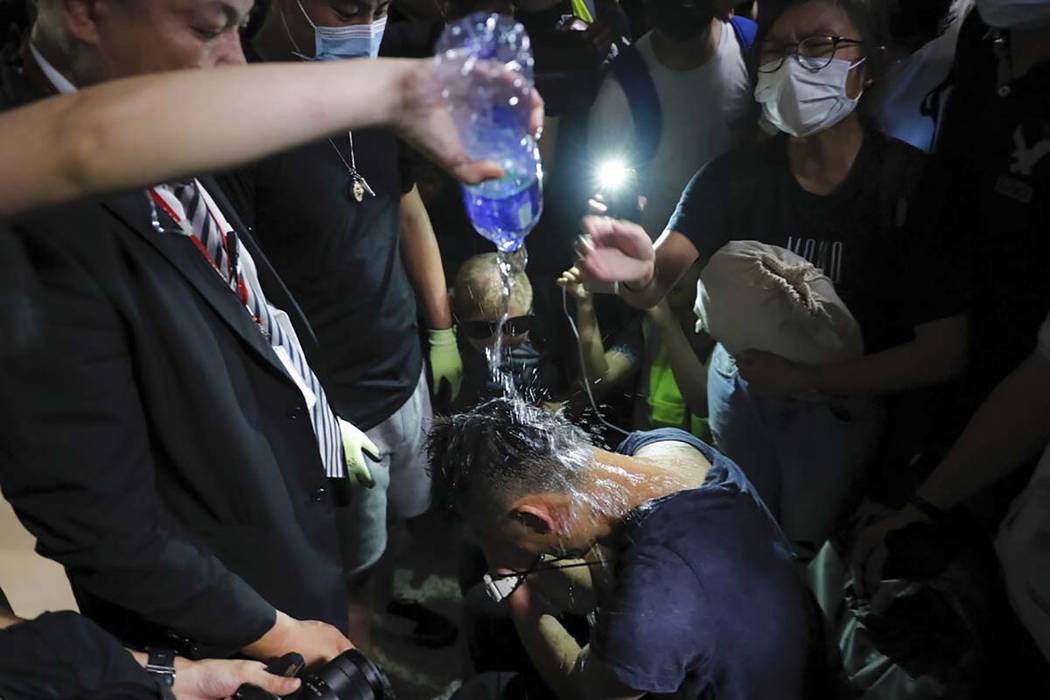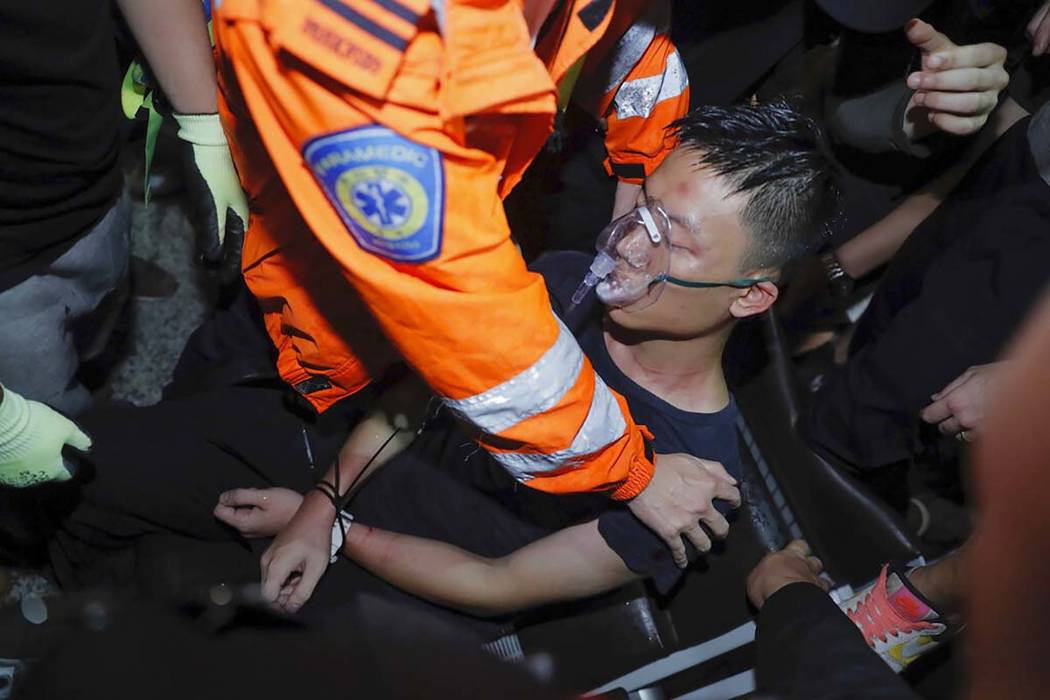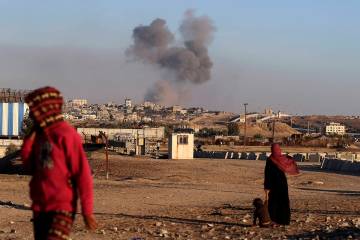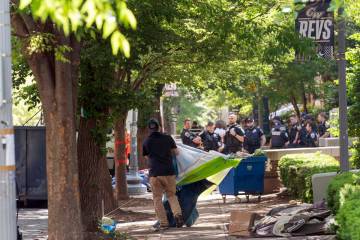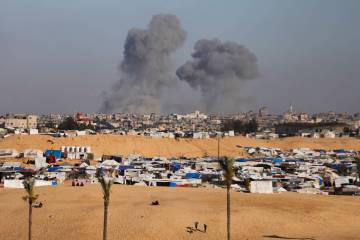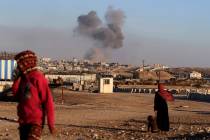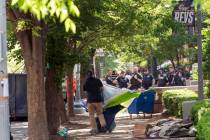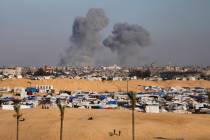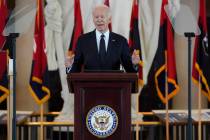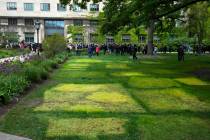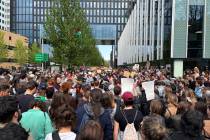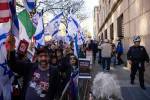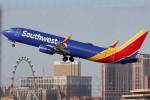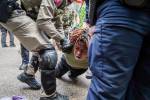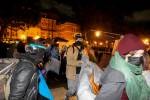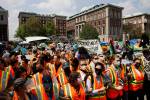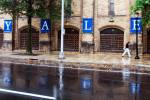Calm returns at Hong Kong airport after police clash with protesters
HONG KONG — Most protesters and police have left Hong Kong Airport after a second day of demonstrations that caused mass flight cancellations at the busy transport hub.
Calm returned to the airport in the early hours of Wednesday after riot police briefly clashed with pro-democracy protesters outside the building earlier Tuesday night. Officers armed with pepper spray and swinging batons briefly tried to enter the terminal, while protesters used luggage carts to barricade entrances.
Hundreds of flights were cancelled Tuesday and Monday and passengers have been forced to stay in the city while airlines tried to find other ways to get them to their destinations.
Police took several people into a police van waiting at the entrance to the airport’s arrivals hall.
Police said they tried to help ambulance officers reach an injured man whom protesters had detained on suspicion of being an undercover agent.
Protesters also detained a second man who they suspected of being an undercover agent. After emptying out his belongings, they found a blue T-shirt that has been worn by pro-Beijing supporters that they said was evidence he was a spy.
All remaining flights cancelled
Earlier in the day, authorities were forced to cancel all remaining flights as the city’s pro-Beijing leader warned that the protesters had pushed events onto a “path of no return.”
After a brief period early in the day when flights were able to take off and land, the airport authority suspended check-in services for departing flights as of 4:30 p.m. Departing flights that had completed the process would continue to operate.
It said it did not expect arriving flights to be affected, although dozens were already canceled. The authority advised people not to come to the airport, one of the world’s busiest transport hubs.
More than 200 flights were canceled Monday and the airport was effectively shut down with no flights taking off or landing. Passengers have been forced to stay in the city while airlines struggle to find other ways to get them to their destinations.
Injured man evacuated
Emergency officials have taken an injured mainland Chinese man away from the airport after angry protesters who accused him of being a Chinese undercover agent tied up his hands and tried to beat him up.
The man was pictured with his hands bound with cable ties, lying in a fetal position on the ground surrounded by a crowd of protesters as demonstrations continued at the airport for a second day and turned tense late Tuesday. Some tried to kick and hit him while others tried to hold the crowd back. Protesters said they detained him because he wore a press vest and claimed to be a reporter, but a mainland Chinese ID card was found in his belongings.
The chaotic situation eventually ended when protesters allowed ambulance workers to take the man away on a stretcher.
Pro-democracy protesters have been sensitive to police infiltration after activists were arrested by officers dressed just like them. Police have acknowledged that they use decoy officers in some operations.
Canceled for a second day
For Grace Bendal, a 43-year-old contractor from the Philippines, Tuesday was the second straight day she came to the airport only to learn flights were canceled. She spent the weekend in Hong Kong with her primary school-age children, who were eager to return to classes.
She said they have already missed two days of school and the extra day in the city has cost her around 3,000 Hong Kong dollars ($400). Though there were no airline employees at check-in counters Tuesday evening, Bendal said she and her children planned to stay at the airport all night.
“I cannot blame them, because they are fighting for something,” Bendal said of the protesters. “But then it’s not right if we are the ones suffering. So I hope they give us a chance to go home.”
Escalation of summer protests
The airport disruptions are an escalation of a summer of demonstrations aimed at what many Hong Kong residents see as an increasing erosion of the freedoms they were promised in 1997 when Communist Party-ruled mainland China took over what had been a British colony.
The protests have built on an opposition movement that shut down much of the city for seven weeks in 2014 before it eventually fizzled and its leaders were jailed on public disturbance charges.
The central government in Beijing has ominously characterized the current protest movement as something approaching “terrorism” that poses an “existential threat” to citizens.
Beijing crackdown possible
While Beijing tends to define terrorism broadly, extending it especially to nonviolent movements opposing government policies in minority regions such as Tibet and Xinjiang, its use of the term in relation to Hong Kong raised the prospect of greater violence and the possible suspension of legal rights for those detained.
Hong Kong leader Carrie Lam said the instability, chaos and violence have placed the city on a “path of no return.”
The black-clad demonstrators have shown no sign of letting up on their campaign to force Lam’s administration to respond to their demands, including that she step down and scrap proposed legislation under which some suspects could be sent to mainland China, where critics say they could face torture and unfair or politically charged trials.
Calls for dialogue rejected
Lam has rejected all calls for dialogue, part of what analysts say is a strategy to wear down the opposition movement through police action while prompting demonstrators to take more violent and extreme actions that will turn the Hong Kong public against them. At the airport, protesters discussed among themselves whether they should simply block all access to the facility.
Meanwhile, paramilitary police were assembling across the border in the city of Shenzhen for exercises that some saw as a threat to increase force against the mostly young protesters who have turned out by the thousands in the past 10 weeks.
While China has yet to threaten sending in the army — as it did against pro-democracy protesters in Beijing in 1989 — the Shenzhen exercises were a sign of its ability to crush the demonstrations, even at the cost to Hong Kong’s reputation as a safe haven for business and international exchange. Images on the internet showed armored personnel carriers belonging to the People’s Armed Police driving in a convoy Monday toward the site of the exercises.
The People’s Liberation Army also stations a garrison in Hong Kong, which recently released a video showing its units combating actors dressed as protesters. Hong Kong police also put on a display of water cannons.
700 arrested since June
Police have arrested more than 700 protesters since June and say they have infiltrated the demonstrators, leading to concerns that officers were inciting violence. Scores of protesters and police have been hurt, including a woman reported to have had an eye ruptured by a beanbag round fired by police during clashes Sunday.
Police said they are investigating the incident, which protesters have taken up as a rallying cry. Some of those joining in the airport occupation wore gauze bandages dyed with artificial blood over one eye.
The U.N.’s top human rights official condemned violence around the protests and urged both sides to settle their dispute through “open and inclusive dialogue.”
Rupert Colville, spokesman for U.N. High Commissioner for Human Rights Michelle Bachelet, said her office had reviewed evidence that police are using “less-lethal weapons in ways that are prohibited by international norms and standards.” That includes firing tear gas canisters into crowded, enclosed areas and directly at individuals, “creating a considerable risk of death or serious injury,” Colville said in a statement.



